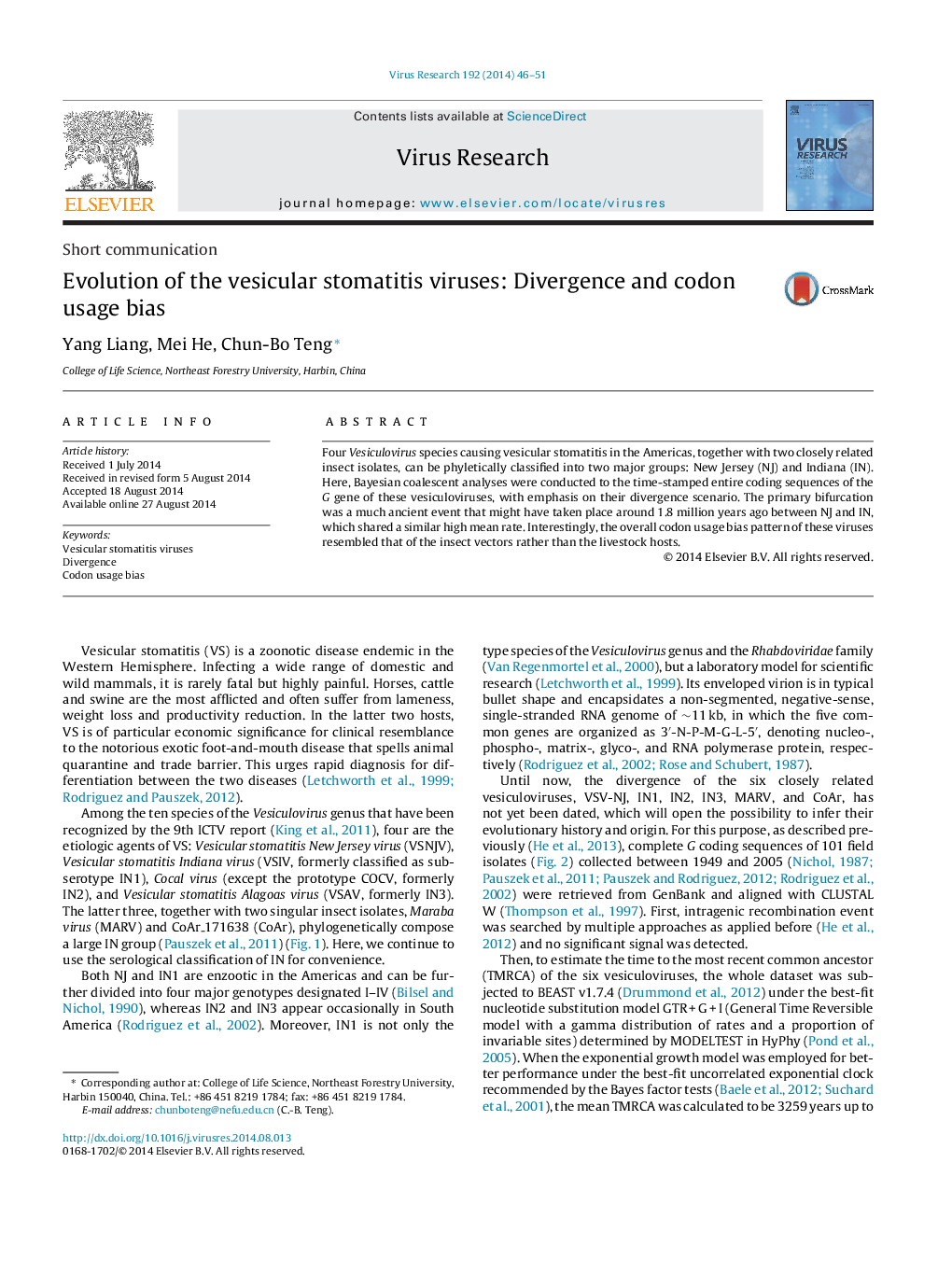| Article ID | Journal | Published Year | Pages | File Type |
|---|---|---|---|---|
| 3428395 | Virus Research | 2014 | 6 Pages |
•The divergence history of the six closely related vesiculoviruses was inferred.•The primary bifurcation was a much ancient event taking place between New Jersey and Indiana groups.•Surveys of codon usage bias revealed a “vector-like” pattern.•Each gene had additional usage bias independent of compositional constraint.
Four Vesiculovirus species causing vesicular stomatitis in the Americas, together with two closely related insect isolates, can be phyletically classified into two major groups: New Jersey (NJ) and Indiana (IN). Here, Bayesian coalescent analyses were conducted to the time-stamped entire coding sequences of the G gene of these vesiculoviruses, with emphasis on their divergence scenario. The primary bifurcation was a much ancient event that might have taken place around 1.8 million years ago between NJ and IN, which shared a similar high mean rate. Interestingly, the overall codon usage bias pattern of these viruses resembled that of the insect vectors rather than the livestock hosts.
